Snail species across the world eat a wide variety of different foods. Many are herbivores and will eat plant matter, such as leaves, algae or fruits. Some snails are carnivores that will eat fish, worms and other animals. Most snail species get enough moisture within their food, and do not drink separately.
Contents
How do snails eat?

There are around 60,000 species of snails across the globe, eating a wide variety of different foods, and living in different habitats and conditions.
As an outside observer, it may not at first be apparent how snails are able to take in food. In fact, they use much the same method as many animals. On their head, below their eyes, sits a bow-shaped mouth. Snails use this mouth to take in and consume their preferred kind of food.
| Feeding Habit | Description | Additional Information/Explanation |
|---|---|---|
| Herbivorous | Herbivorous snails primarily feed on plant material such as leaves, stems, flowers, and fruits. | They have specialized radula and mouthparts to scrape and consume plant matter. |
| Detritivorous | Detritivorous snails feed on decaying organic matter, such as fallen leaves and decomposing vegetation. | They help with the decomposition process and nutrient recycling in ecosystems. |
| Carnivorous/Predatory | Some snail species have predatory tendencies and feed on other small invertebrates like worms or insects. | These snails have adaptations like a larger aperture and specialized radula for capturing prey. |
| Grazing/Scraping | Grazing or scraping snails feed by scraping algae or plant material from surfaces, such as rocks or bark. | They leave behind distinctive feeding trails or marks. |
| Fluid-feeding/Blood-feeding | A few snail species have adapted to feed on fluids, including blood. | They possess adaptations like specialized mouthparts to pierce the skin and feed on fluids. |
Once food has entered their mouth, snails have a slightly unique way of dealing with it. Rather than having a jaw, lined with teeth, they have an appendage within their mouth known as a radula or a rasp tongue. The exact design of the radula varies between species, depending on what type of food they specialised in. In most species, the radula is covered in small chitin teeth, the same material our fingernails are made from.
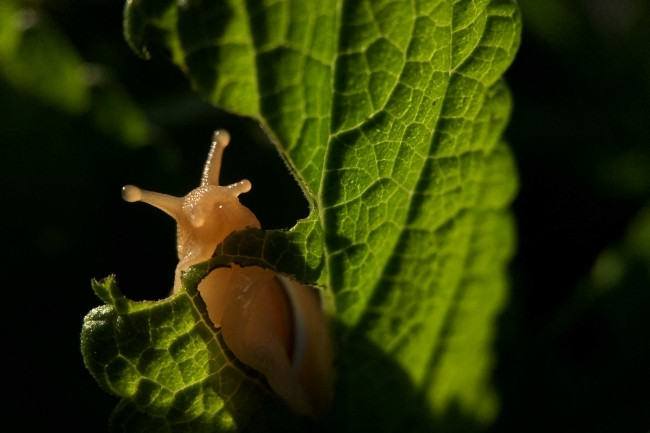
These ‘teeth’ help to rasp away at the food the snail is eating, while the mouth itself helps to break off pieces to eat. Once the food has been processed, it is sent down into the stomach, along with enzymes that help to break it down.
When it comes to drinking, most snails do not need to drink water to survive. As with many smaller animals, their food provides them with enough moisture, without needing to drink additional water.
However, that’s not to say water isn’t important to snails. As with many molluscs, they cannot survive if they start to dry out too much. If they find themselves in a dry environment, they will usually retreat into their shell to protect themselves from desiccation. Terrestrial snails generally spend their time in damp or humid areas, where it’s less likely they will dry out.
If a snail does find itself a little thirsty, it may choose to sit in water, absorbing the moisture through its body, rather than drinking it up with its mouth.
Also read: Is Snail Vertebrate or Invertebrate? (Let’s Find Out)
Do snails eat algae?

Algae is seen as a common problem among those with fish tanks and garden ponds. One method of control, often employed, is to introduce snails into the environment. While we tend to think of land snails, when we talk about snail species, there are a large number that live in freshwater or saltwater habitats.
Algae is a common food for snails such as Nerite snails, which are found across the world in intertidal zones, and many species of ramshorn snails. For species that specialize in algae, this will be their most important food source, whereas other species of snails won’t even consider taking a nibble.
Do snails eat plants?
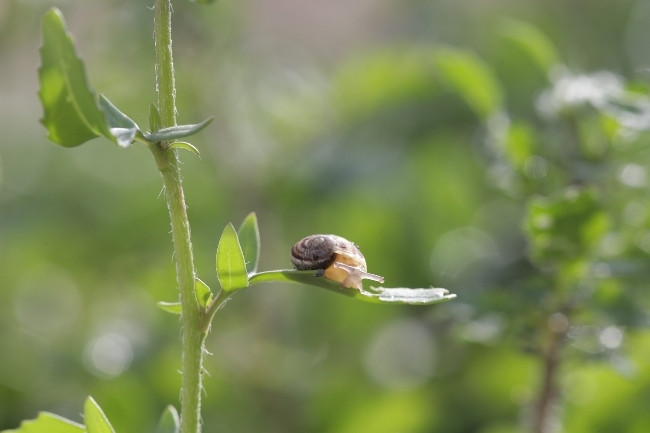
The vast majority of the snails are herbivores, eating exclusively plant matter. Most of these snail species won’t be specialized to particular plants, instead eating whatever is readily available. Snails will eat most parts of a plant, including leaves, stems, fruits and flowers.
Although most snails do not specialize, snails will often choose to eat younger plants, as they are more palatable at this age. There are also certain plants that are more appealing to snails, such as cabbages. As well as living plant matter, snails will eat rotting plant matter.
Also read: Snails are Slow: Here’s a Reason Why
Do snails eat fish?

The majority of snail species do not eat meat, however, there are some species that are carnivorous hunters. Most carnivorous species are far more likely to eat dead fish, either washed up on the shoreline or at the bottom of the water body. When it comes to catching and eating a fish, however, there are few snails that could quite do the task justice.
One exception comes in the form of cone snails. Cone snails are marine snail species that have one harpoon-like radula, which they use to spear animals, such as fish, and deliver a poisonous venom.
Also read: Which Species of Frogs Eat Fish (Explained)?
Do snails eat fish poop?
As well as the delightful habit of eating dead bodies, many snails will happily consume the waste products of other animals, including fish poop. Such behaviour benefits all involved, preventing the build-up of faeces, and the potential spread of disease, and giving the snails an easy form of nutrition.
What does a freshwater snail eat?
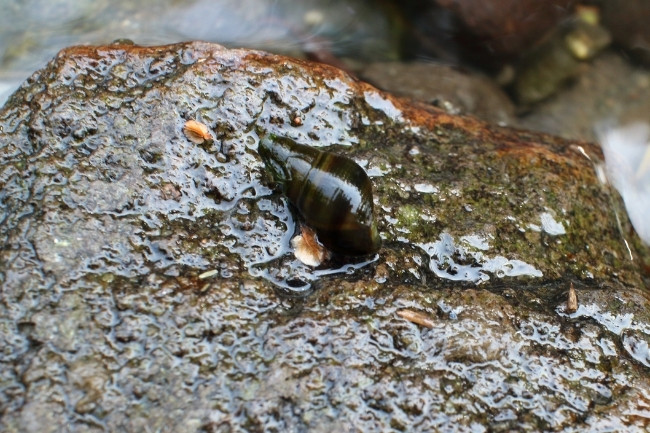
There are 4,000 species of freshwater snails across the world, living in lakes, ponds, rivers and streams. Like land snails, freshwater snails can eat a variety of different things depending on the species. Many are herbivores and will eat algae or aquatic plants. Many will also eat dead or decomposing plant or animal matter.
Some freshwater snails are also carnivorous, such as the assassin snail. This attractive snail has a brown and yellow striped shell, and hunts other gastropods and worms.
What does a sea snail eat?
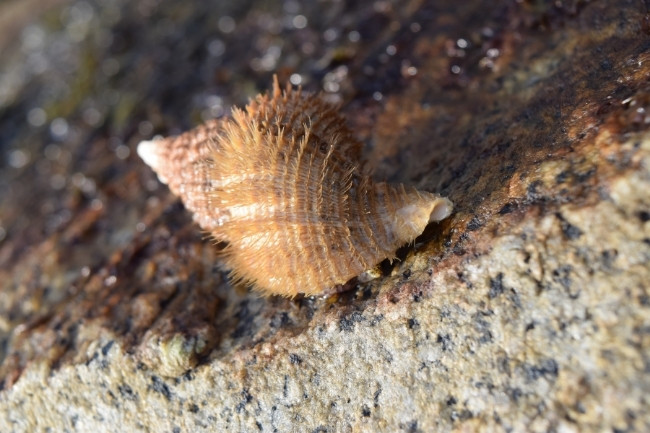
Sea snails eat a wide variety of different foods, depending on the species. Many species are herbivores and will feed on algae or seaweeds, particularly in the intertidal zones. However, there are also many carnivorous species of sea snails. These may eat fish, barnacles or worms.
Periwinkles are well-known sea snails, which eat algae, and are often found in rock pools and in areas of seaweed. Knobbed whelks are large and attractive see snails, with impressive conical shells. These carnivorous snails feed on other molluscs, such as clams, oysters, and mussels.
What do garden snails eat?
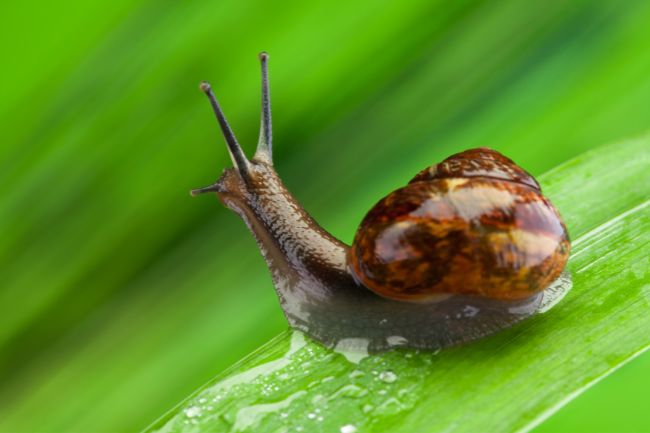
While colloquially any snail that inhabits a person’s garden may be referred to as a garden snail, the official garden snail is Cornu aspersum. This species is native to Europe, across the UK and the Mediterranean. It has also been introduced across much of the world, including to North America.
Garden snails are herbivores, and eat a wide range of different plants. They will eat leafy materials, fruits and vegetables, as well as harder stems. Like most snails, though they will eat a wide variety of plants, they often have preferences for certain plants, such as cabbages.
Do snails eat fish eggs?
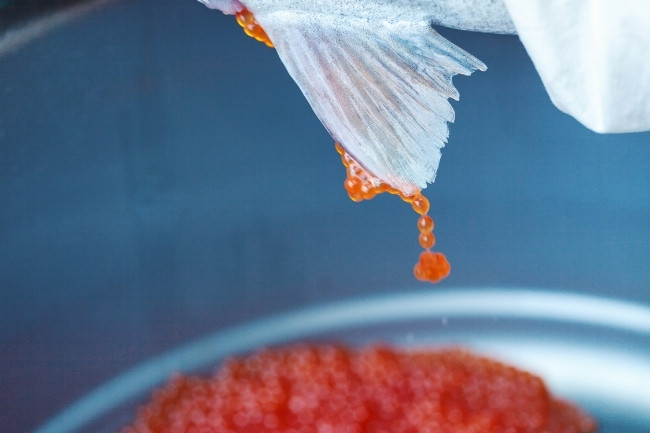
Snails are often opportunistic feeders. While fish eggs aren’t a food that most species would hunt for, they are a useful source of protein, and many carnivorous species of snails will eat them if they come across them.
Why is my snail not eating?
Snails can go a long time between meals and may not eat for long periods of time. However, snails may also choose not to eat if they are ill or injured. Any breakage to their shell may require them to rest till they heal.
Snails are also very susceptible to drying out, as well as high or low temperatures. If the air becomes too dry or the temperature becomes unsuitable for them, they will often retreat into their shells and wait for conditions to improve.
| Species Name | Scientific Name | Preferred Food Sources | Additional Information/Explanation |
|---|---|---|---|
| Garden Snail | Helix aspersa | Plant matter, fruits, vegetables, algae | Garden snails are known to feed on a wide range of plant material. |
| Roman Snail | Helix pomatia | Leaves, herbs, flowers, fruits, mushrooms | Roman snails have a preference for leafy greens and herbs. |
| Milk Snail | Otala lactea | Decaying plant matter, mushrooms | Milk snails are detritivores and often consume decaying plant material. |
| Banded Snail | Cepaea nemoralis | Vegetation, leaves, flowers | Banded snails primarily feed on vegetation found in their habitat. |
| Vineyard Snail | Otala punctata | Grapevines, leaves, stems | Vineyard snails are known to damage grapevines in vineyards. |
If conditions are suitable for the species of snail, then their lack of appetite could be down to a wide variety of illnesses. Unfortunately, many snail illnesses can be difficult to diagnose and may require advice from an expert.
Dinner time
Snails are often seen as the gardener’s enemy, munching away at prized vegetables, yet not all snails are the enemy. Snails are important in helping to dispose of rotting plant matter, and animal waste, which can help to spread disease. They are also an important source of food for other animals, from birds to hedgehogs. So while they might not always be welcome, they are certainly an important part of our natural environment.

